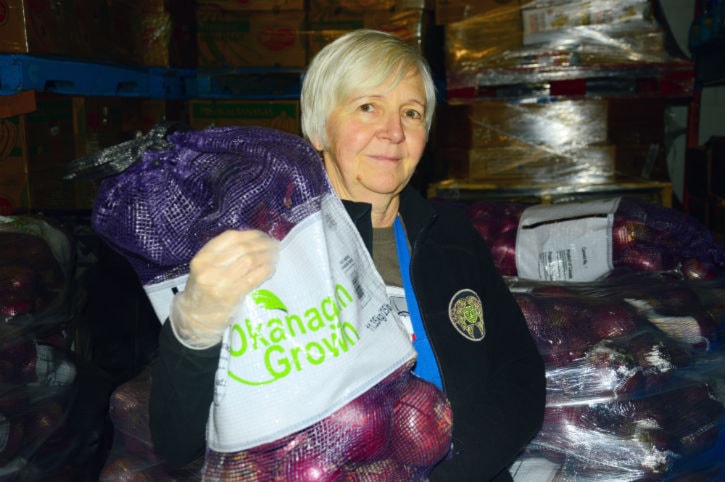Dozens of people walk into a warehouse-style building in Surrey’s Whalley neighbourhood. It’s late Thursday morning and most of them have one thing in common – they’re carrying totes or wheeling carts behind them.
They’re coming to use a service that was meant to be a ‘temporary solution to a temporary problem' when it was established 34 years ago – but decades later, the Surrey Food Bank still serves 14,000 people per month.
In B.C., the number of food bank users has grown by 33 per cent. That keeps B.C. with the third highest number of food bank users in the country, something that a Food Banks Canada report released Tuesday notes could be due to B.C. being the only province with no poverty reduction strategy.
WATCH: Why Fern Fennell volunteers
Surrey Food Bank executive director Marilyn Herrmann said the number of customers has fluctuated over the years, though it’s hard to track, but it certainly hasn’t dropped.
“The challenging thing is that that people don’t necessarily use the food bank for long periods of time. It’s temporary and short-term – maybe they’ve lost their job, maybe they’re waiting for EI, they don’t have family they can turn to for support,” she said.
While clients can use the Surrey food bank every two weeks, most of them only use it one to five times per year.
Herrmann is happy with that irregularity. Anything else, she believes, isn’t the best case use.
“We’re an emergency service. We’re here to support but not to feed people over long periods of time,” she said.
“People leave here with three to four days worth of food – people are thinking we’re giving [our clients] two weeks of food and we wouldn’t even be able to begin to do that, nor is that our role.”
When clients come in for the first time, they get asked one particular question: “What has to change in your life for you not to need the food bank?"
The hope is that when circumstance change, the clients can go back to being self-sufficient.
"We get three answers – 'I need affordable housing,' 'I need more more money' and 'I wouldn’t need you if I had affordable daycare,'” said Herrmann, adding that most people coming in are the working poor.
A never-ending fight against hunger
With the ongoing crisis in Syria, Surrey has become the home for thousands of refugees. According to Food Banks Canada, nearly 1,700 have been relocated to the Lower Mainland and nearly half of those ended up in Surrey. Canada-wide, refugees make up 13 per cent of food bank users.
A Food Banks Canada report cites a 17-per-cent increase in demand for food bank services in Surrey, and attributes much of that to new refugees, but Herrmann said the city’s already quickly growing multicultural population has made it easier to absorb the newcomers.
“Certainly language is an issue but if you think about it, anytime you go somewhere new it takes time before you feel part of that community."
"They’re incredibly well-educated – I know right now of a doctor and a dentist who are looking for truck driving jobs because they can’t practice here – so we’re very sensitive of that. I don’t know when somebody walks through our doors what has happened in their life.”
WATCH: Why people come to the food bank
Helping kids get a good start
More than one-tenth of food bank clients are under age six. That’s inspired the Surrey branch to start three services for pregnant women, babies, toddlers and pre-kindergarten aged kids – Tiny Bundles, Toddler Totes and Pre-K.
“Once they get into the school systems, there’s wonderful breakfast programs and there’s support there, but that first four years is pretty dependent upon the family,” said Herrmann.
The food bank used to rely on donations for formula and hand it out to moms when they had it.
“In my early days here, a mum came in with her little one, begging for formula. I didn’t have any and she went away crying. She cried and I cried because what was she going to do now? It’s expensive to buy formula,” said Herrmann.
She related that story to the board of directors.
“They said, ‘Don’t let that happen again.’"
